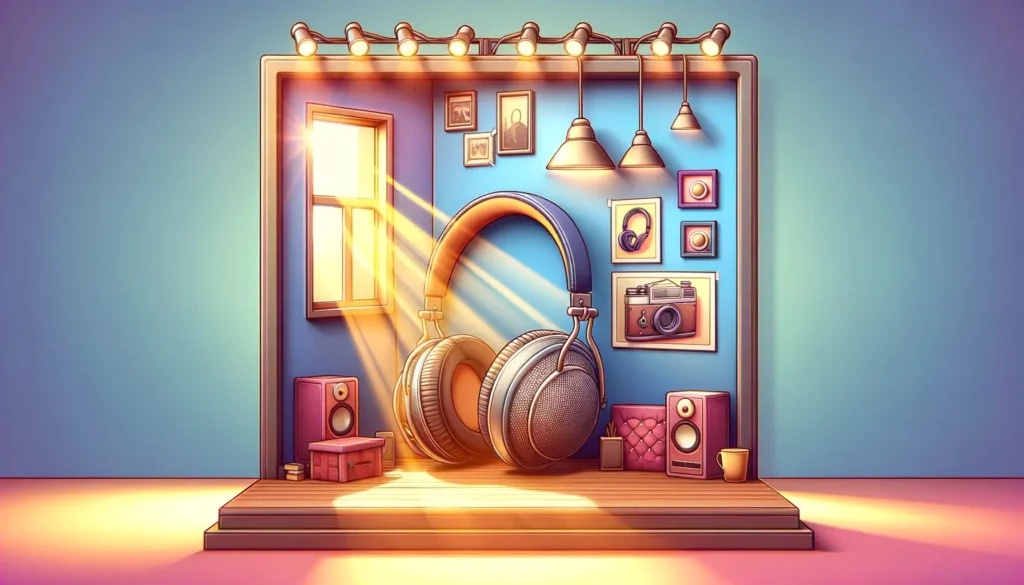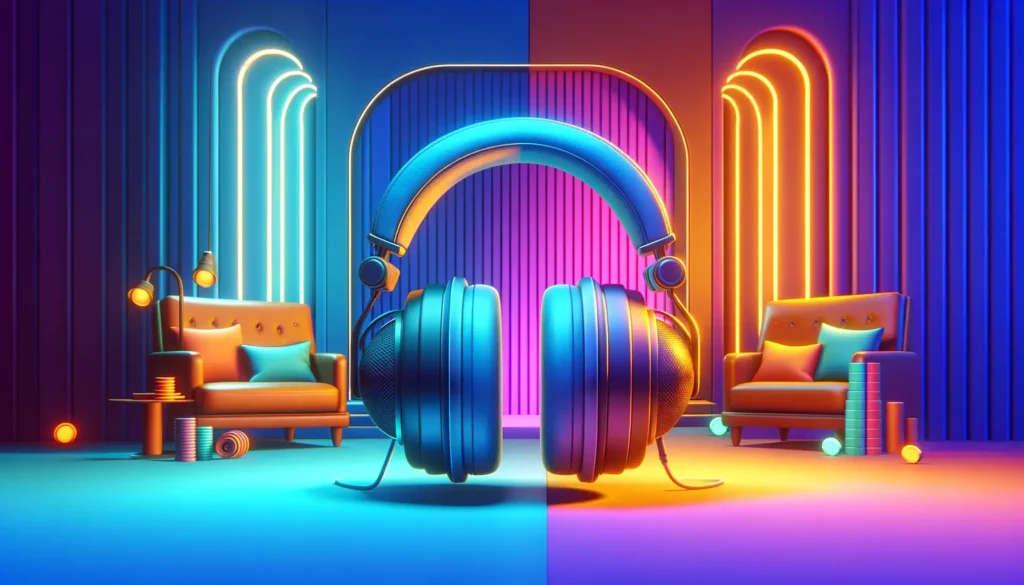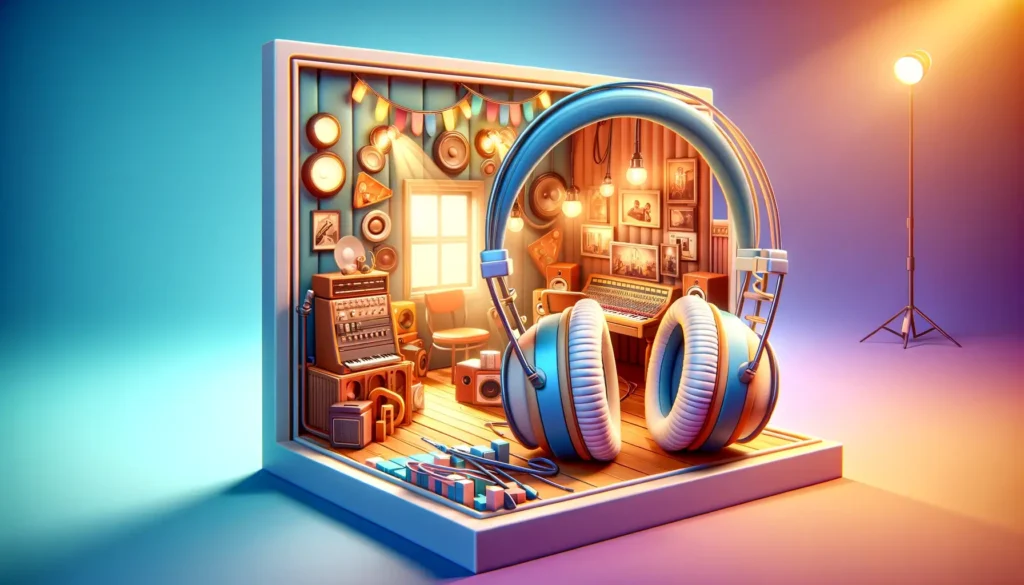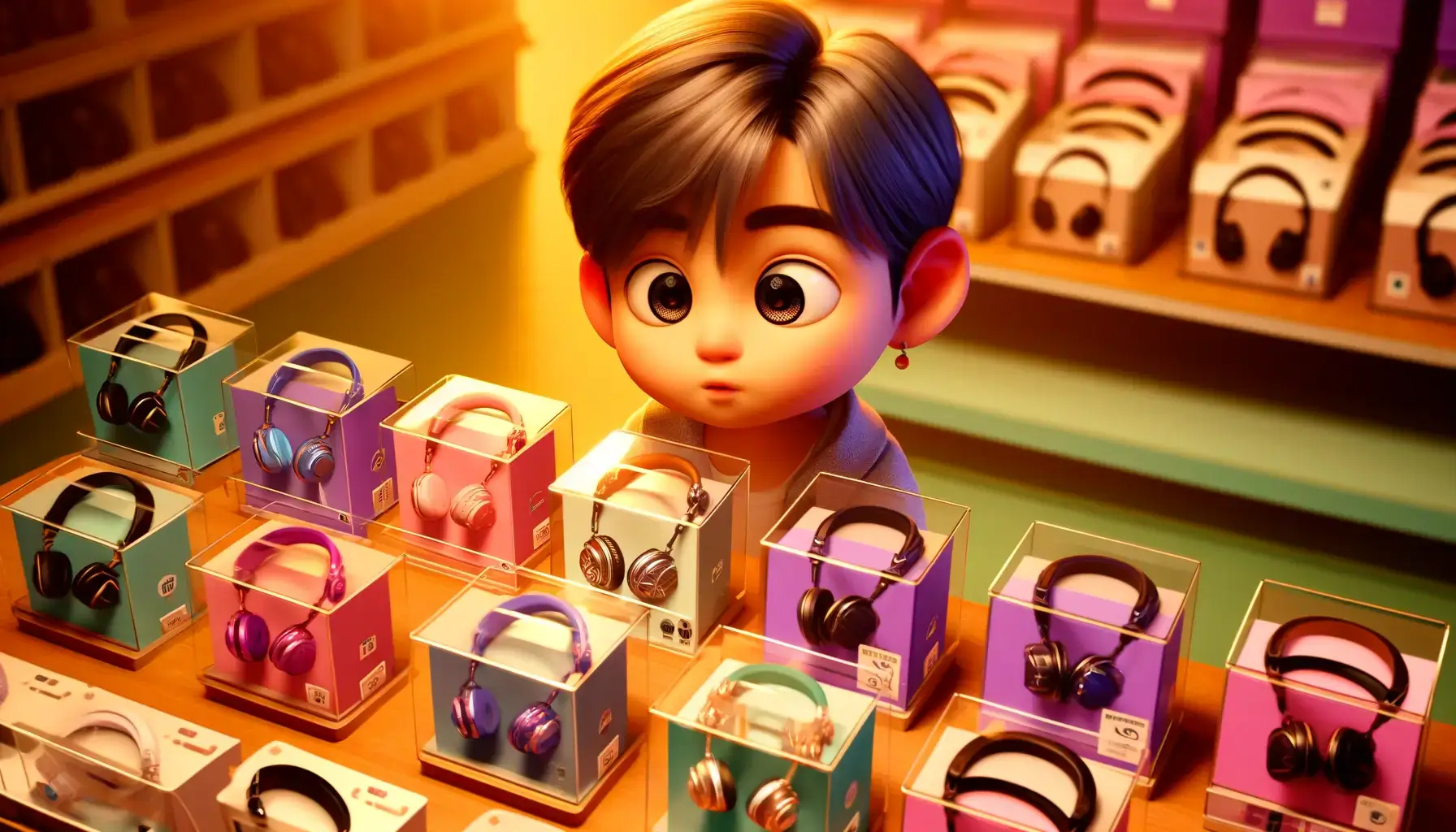Choosing between open back vs closed back headphones can be a daunting decision, especially if you’re looking for the best listening experience.
Different types of over-ear headphones provide distinct benefits depending on where and how you’ll use them.
Understanding the key differences between open back and closed back designs will help you pick the best fit based on your listening environment, whether you’re focused on casual listening, critical listening, or even studio monitoring.
Key Takeaways
- Open-back headphones provide a wide sound stage and natural sound but leak sound and lack isolation.
- Closed-back headphones offer superior noise isolation and enhanced bass, making them ideal for noisy environments.
- Semi-open back headphones strike a balance, offering partial isolation with a more natural sound stage.
Different Types of Headphones
Headphones come in various types, each designed to cater to specific needs and preferences. Two of the most popular types are open-back and closed-back headphones.
Open-back headphones have ear cups that allow air and sound to pass through freely, creating a more natural and spacious sound.
This design is perfect for those who prioritize sound quality and enjoy a wide sound stage. However, they do allow external sounds in and can leak sound out, making them less suitable for noisy environments.
Closed-back headphones, on the other hand, have a sealed design that blocks sound from both entering and escaping the ear cups.
This makes them ideal for use in public places or noisy environments where you need to block out unwanted noise. They also tend to provide a stronger bass response, which can be a plus for bass enthusiasts.
What Are Open-Back Headphones?

Open-back headphones have a design where the ear cups allow air and sound to pass through freely. This creates a more open and natural sound, akin to listening to a speaker in a room rather than having sound funnelled directly into your ears.
The wide sound stage makes them ideal for home listening or studio monitoring when you want to experience audio as it was recorded. Unlike closed backs, which provide isolation and are ideal for noisy environments, open-back headphones offer a more natural and spacious sound.
However, because they let sound in and out, open headphones aren’t ideal for environments with a lot of ambient noise. They provide a rich, open listening experience but aren’t suitable for commuting or noisy offices, as the outside world will seep into your music.
Pros of Open-Back Headphones
- Wider, more natural sound stage for immersive listening.
- Reduced low-frequency build-up inside the ear cups, giving a more detailed sound.
- Suitable for long periods of use due to better airflow around the ears.
Cons of Open-Back Headphones
- They allow for significant sound leakage, so others may hear what you’re listening to.
- Provide little to no outside noise isolation, which makes them unsuitable for loud environments.
Did you know?
Open-back headphones are often used in critical listening and mastering because they deliver a more accurate reproduction of sound. The design helps prevent low-frequency build-up, offering a clearer and cleaner bass response than closed-back models.
What Are Closed-Back Headphones?

Closed-back headphones feature a sealed design that blocks sound from both entering and escaping the ear cups. This makes them ideal for listening in public places, offices, or anywhere you need to block out unwanted noise.
The closed nature of the design creates a more enclosed listening environment, perfect for casual listening, commuting, or professional settings like recording studios.
When comparing closed back vs open back headphones, it’s important to consider your listening environment and preferences. Closed-back models also tend to provide stronger bass response and are excellent at handling low-end frequencies.
For those who need isolation, such as in a noisy office or while traveling, closed-back headphones provide the quiet you need without sacrificing sound quality.
Pros of Closed-Back Headphones
- Superior noise isolation for use in noisy environments.
- Reduced sound leakage, keeping your music private.
- More pronounced bass performance, making them ideal for bass-heavy music.
Cons of Closed-Back Headphones
- Can cause low-frequency build-up inside the ear cups, which may lead to a less clear sound over long periods of listening.
- May feel more enclosed and less natural compared to open-back headphones.
Did you know?
Closed-back headphones are excellent for environments where noise isolation is essential, such as recording vocals or podcasts. Their design prevents sound leakage, making them a preferred choice for people who want to keep their music private.
Semi-Open Back Headphones: A Compromise

For those looking for something in between, semi-open back headphones provide a balance of both worlds. They allow some sound to pass through, giving a more natural listening experience while still offering some degree of isolation from outside noise.
Semi-open back designs are often used by professionals in studio environments where both sound quality and isolation are important.
Key Differences Between Open Back and Closed Back Headphones
When deciding between open-back and closed-back headphones, several factors come into play. Here’s a closer look at how each design performs across key areas:
- Sound Leakage:
- Open back: Significant leakage, others will hear your music.
- Closed back: Minimal leakage, keeping sound contained.
- Noise Isolation:
- Open back: Poor isolation; allows ambient noise in.
- Closed back: Excellent isolation, ideal for noisy environments like offices or public spaces. Closed backs provide superior isolation, making them ideal for noisy environments.
- Bass Response:
- Open back: More balanced but less pronounced bass.
- Closed back: Stronger bass with the potential for low-frequency build-up.
- Listening Environment:
- Open back: Best for quiet environments where sound leakage isn’t a concern.
- Closed back: Perfect for noisy environments or when you need isolation from external sounds.
- Comfort for Long Listening:
- Open back: Generally more comfortable over long sessions due to better airflow around the ears.
- Closed back: Can become warm after long periods, but modern designs with cushioned ear cups help mitigate this.
Whether you’re using open back headphones to appreciate the expansive soundstage or closed back headphones to isolate yourself from noisy surroundings, pairing them with genres like Lo-Fi music can enhance your listening experience significantly.
Choosing the Right Headphones for You

When deciding between open-back headphones and closed-back headphones, think about your needs and the listening environment.
If you mostly listen in a quiet studio or at home, open headphones might offer a more engaging and natural sound.
However, if you’re frequently on the go or work in a busy office, closed-back headphones with their better noise isolation may be the better option.
Choosing the right audio gear can significantly enhance your listening experience.
Studio Use

In a studio setting, the choice between open-back and closed-back headphones can significantly impact your workflow. Closed-back headphones are often the preferred choice for recording and mixing due to their superior isolation from external sounds.
This isolation is crucial in a quiet studio environment, as it prevents sound leakage that could interfere with recording sessions. Closed-back headphones also help you focus on the details of the mix without being distracted by outside noise.
However, some audio engineers and producers prefer open-back headphones for critical listening and mixing. The open design provides a more accurate representation of the sound, allowing you to hear the music as it was intended.
This can be particularly beneficial for tasks that require precise audio analysis, such as mastering or fine-tuning a mix. The natural sound quality and wide sound stage of open-back headphones make them a valuable tool for professionals who prioritize sound accuracy.
Listening at Home

For home listening, open-back headphones are often the go-to choice for audiophiles and music enthusiasts. The open design provides a more natural sound quality and a wider sound stage, making your listening experience more immersive and enjoyable.
Whether you’re relaxing with your favorite album or diving into a complex piece of music, open-back headphones allow you to hear every detail with clarity and precision.
However, it’s important to consider your listening environment. Open-back headphones are best suited for quiet spaces where external sounds won’t interfere with your music.
If you live in a noisy household or have a lot of ambient noise, you might find that the lack of isolation can be a drawback. In such cases, closed-back headphones or semi-open back headphones might be a better option.
Listening in Public Places
When it comes to listening in public places, closed-back headphones are often the preferred choice. Their sealed design provides better isolation from external sounds, allowing you to enjoy your music without being disturbed by the surrounding noise. This makes them ideal for commuting, working in a busy office, or any other noisy environment where you need to block out ambient noise.
Closed-back headphones also help to prevent sound leakage, ensuring that your music stays private and doesn’t disturb those around you. This can be particularly important in public places where you want to be considerate of others.
However, if you find closed-back headphones too isolating or prefer a more natural sound, semi-open back headphones can offer a good compromise. They provide a balance between sound quality and isolation, making them a versatile option for various listening environments.
Conclusion
In summary, the choice between open-back and closed-back headphones depends on your listening habits, your environment, and your priorities.
Open-back headphones are perfect for those seeking a natural and immersive sound, but they come with the caveat of sound leakage and no noise isolation.
Closed-back headphones, on the other hand, offer superior bass and noise isolation, making them ideal for use in busy environments. Consider your specific needs, and you’ll find the best choice for you.
At SoundHub, we’re dedicated to exploring the vast universe of audio and sound accessories.
FAQs
1) What are the key differences between open-back and closed-back headphones?
Open-back headphones have an open design that provides a wider sound stage but also allows sound leakage. Closed-back headphones seal the sound, offering better noise isolation and privacy.
2) Are open-back headphones suitable for outdoor use?
No, open headphones are best used in quiet environments because they allow external sounds in and let your music out.
3) Do closed-back headphones have better bass than open-back?
Yes, closed-back models typically provide deeper bass response, but they can also suffer from low-frequency build-up.
4) Can I use semi-open back headphones for critical listening?
Yes, semi-open back headphones provide a balance between natural sound and isolation, making them a versatile option for critical listening.



